Syngoniums are special creepers with large bright green leaves belonging to the Aroid family. Most species of this plant are distinguished by their inability to branch independently. Branching can only be stimulated by pruning shoots. In nature, there are several dozen plant species, but units are used in indoor floriculture.
Syngoniums are evergreen perennials. With proper care, they grow very quickly, which is especially appreciated by flower growers. For a year, growth can be up to 90 cm. Liana can be grown as an ampel variety or give it a tree shape. Caring for a flower at home is not burdensome, with the exception of only a few varieties that require increased attention.
Content
Signs, superstition and the history of the cultivation of syngonium
During the application in indoor floriculture, the syngonium has grown over a considerable number of folk signs and superstitions. Among them there are those who approve of growing creepers in the house and those who advise to refrain from acquiring a green pet.
Positive signs about syngonium are as follows:
- The watchman of family happiness. A flower radiates positive energy and absorbs all negative.
- The ability of plants to transform helps to transform people. Holders of creepers are changing for the better.
- Syngonium helps to “burn bridges”. It contributes to a painless parting with an unpleasant past.
- Home doctor. It is believed that the flower contributes to the speedy cure of its owner from diseases.
- Night watchman. The plant intercepts nightmares and bad dreams, allowing the host to enjoy a healthy sleep.
The following signs are associated with the content of the flower in the house:
- The antipyretic agent. According to popular beliefs, the flower in every possible way survives men from its home.
- Poisonous breathing. The Chinese believe that this plant poisons the life of other household members. However, it should be noted that the natives of the Middle Kingdom endow all plants with an arrow-shaped leaf shape with this property.
Syngonium came to Europe from the tropics of America. The bright appearance of the flower attracted universal attention, and soon it became very popular among flower growers. The name of the plant is translated from Latin as "the union of seed and bud." It indicates the peculiarity of the creeper to securely hide the seed germ in the ovary.
Characteristics of the plant Singonium and species diversity
The stems of the syngonium are strewn with tiny aerial roots, with the help of which the liana clings to the supports. In young plants, the stems are bright green, flexible. As they age, they darken, lignify and lose flexibility.
The leaves are whole, heart-shaped. With age, the plates diverge, taking a lobed shape. On one bush, both heart-shaped and lobed plates can be simultaneously present. All varieties are characterized by a central vein.The surface of the plates may be smooth or velvety. The color of the leaves varies depending on the variety:
- shades of green;
- pink;
- whitish;
- chocolate red;
- spotted.
Indoor syngonium blooms extremely rarely. If this happens, you can see a white cob wrapped in a meager reddish bedspread. In the natural environment, syngonium flowers look much more spectacular.
Liana has only 2 species. But the number of varieties bred from them is amazing. The photo shows how beautiful these plants are due to the unusual leaves.
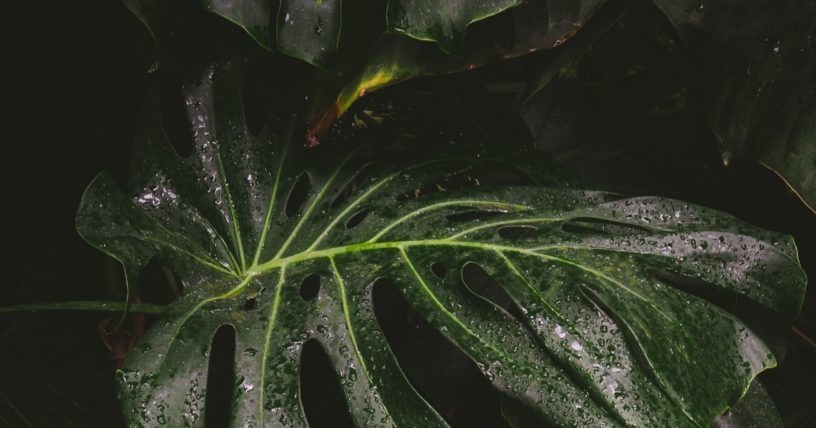 You may be interested in:
You may be interested in:Imperial White
Imperial White is also called variegated variety. He is very popular among gardeners, but not everyone is taken to grow this hybrid. A plant of this variety is considered very moody and finicky. At the slightest deviation from proper care, the flower loses its decorative pattern and aesthetic value.
Hybrid plates are rather large, heart-shaped. Petioles elongated, light brown. White spots appear on the dark green background of the leaves. The larger the spot, the higher the decorativeness of the plant. There are specimens with completely white leaves.
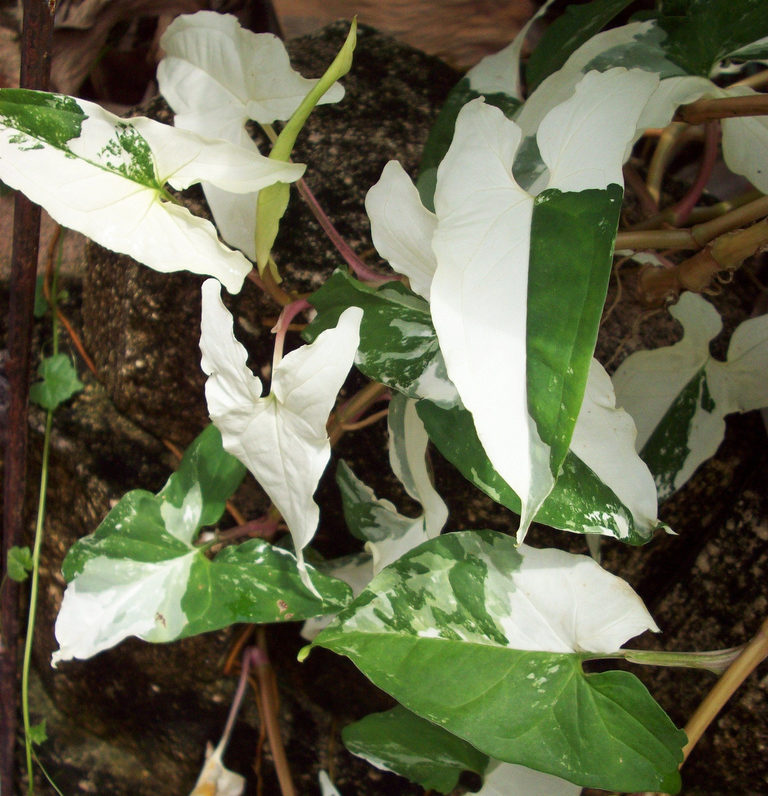
This liana is characterized by high creep. With the help of supports, you can give it a variety of forms.
To maintain an unusual pattern, it is required to maintain a certain concentration of nitrogen in the soil. If the proportions are not respected, the leaves turn green. With this variety, there are often problems when transplanting - the flower is very bad about any changes in its usual microclimate.
Despite the fact that the cultivation of this hybrid is troublesome, it is worth it. You can evaluate the unusual color of Imperial White by his photo, and in the “live view” he looks even more spectacular.
Eared
Representatives of the Ushkovaty species are distinguished by leaves resembling saggy ears. These are rapidly growing vines, which are able to give growth of up to 70-90 cm per year. The leaves are large. The petiole is 30-40 cm long. The plates change shape over time.
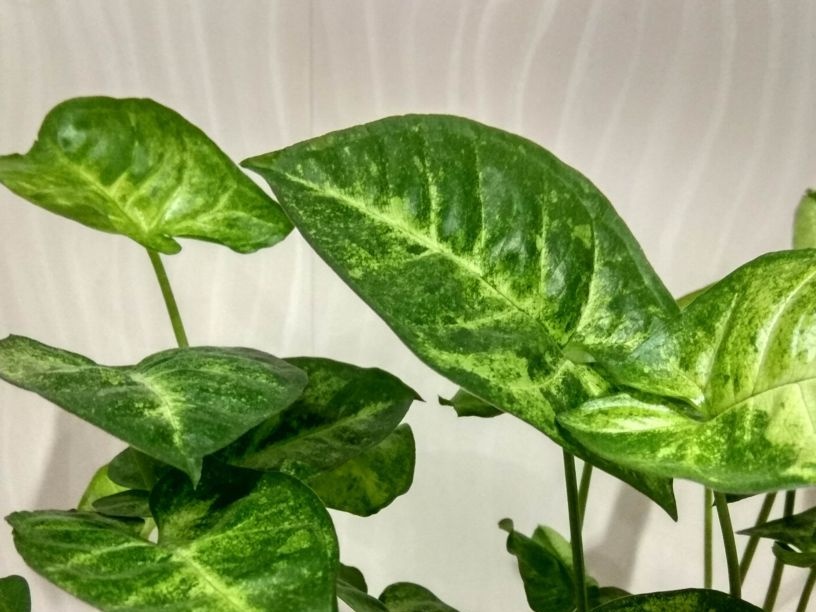
The color of the leaves is preferably represented by shades of green. The surface of the leaves is shiny.
The combination of this species with the Noctifolia Syngonium made it possible to breed many different varieties that differ in leaf color, surface type and other features.
Footed
The stalked species is also known as the podophyllous. Unlike the Ushkovaty species, the stalked representatives differ in very thin stems, prone to strong branching. These creepers do not grow so rapidly. In good conditions, they give an annual increase of 40-60 cm.
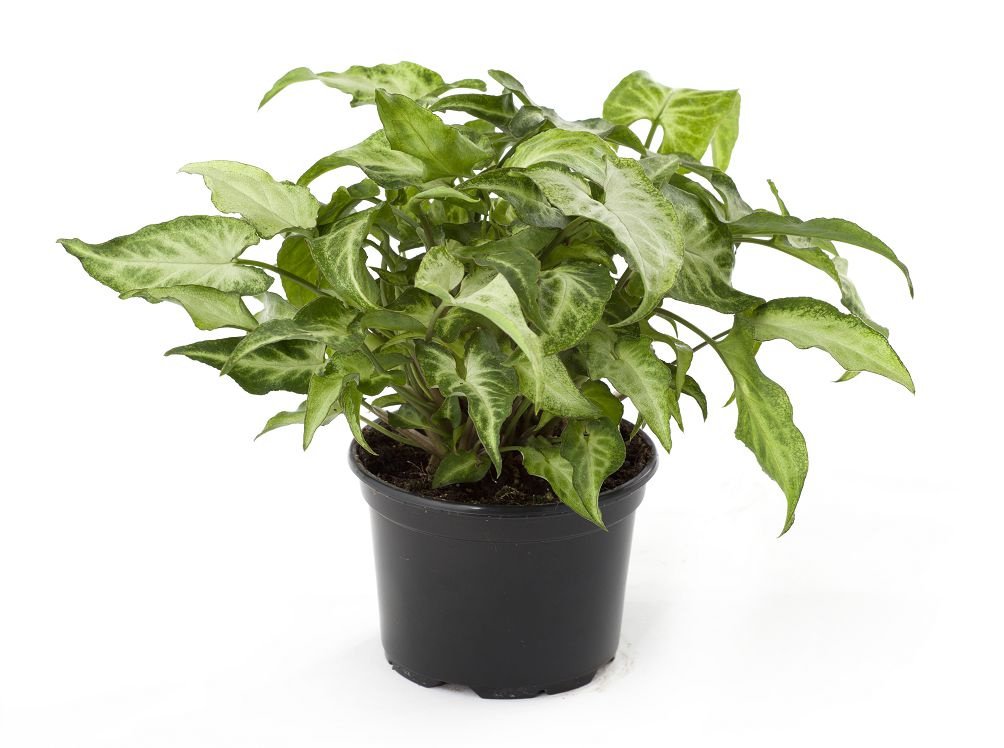
The stems are literally strewn with leaves. Young plates are swept in shape. As they age, they change, resembling a repeatedly dissected ellipse. The maximum number of sections is 11. The leaves are large. Petioles can reach more than half a meter in length.
Aron brown
Aron Brown is a miniature vine with large leaves of unusual color. This variety is grown in the form of a bush.
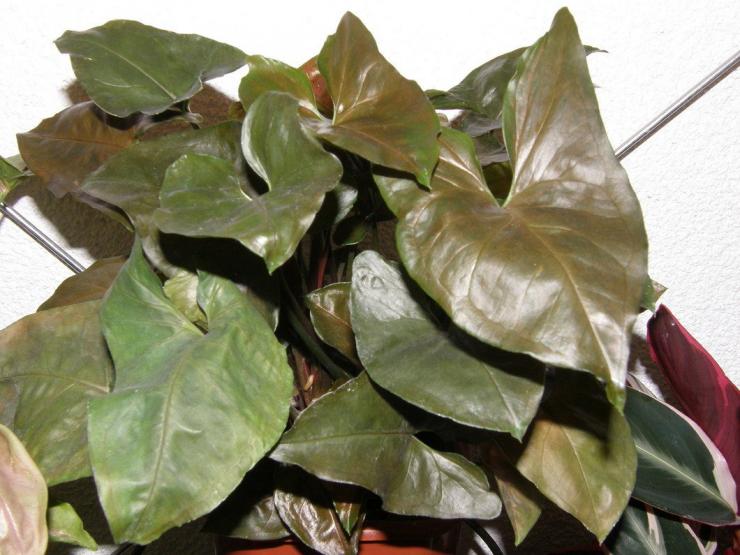
The color of the leaves combines dark pink and dark green shades. In the color of young leaves there are orange-brown notes. The vein skeleton is highlighted in pink. Over time, the leaf loses its pink hue, acquiring an even dark green color.
The shape of the plates is heart-shaped, with a very pointed edge. The surface of the sheet is shiny, glossy.
Pink
Pink Syngonium is also found under the name Neon. The variety is represented by a compact bush with very large leaves.
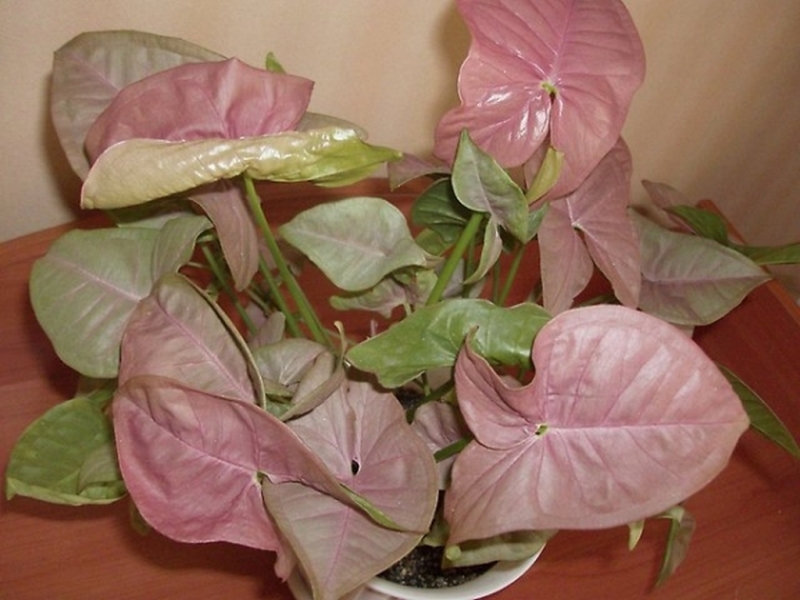
The plates are heart-shaped, long-arched. The surface is glossy.Young leaves have a bright pale pink color. Over time, they fade. Along the edge of the plates is a gentle lime fringing. Young and old leaves have an emphasized central vein in the color of a young peony. Some hybrids may have lettuce and pink leaves at the same time.
Pixy
Pixies are dwarf hybrids with amazing leaf colors. Representatives of the Pixie variety are grown in compact bushes.
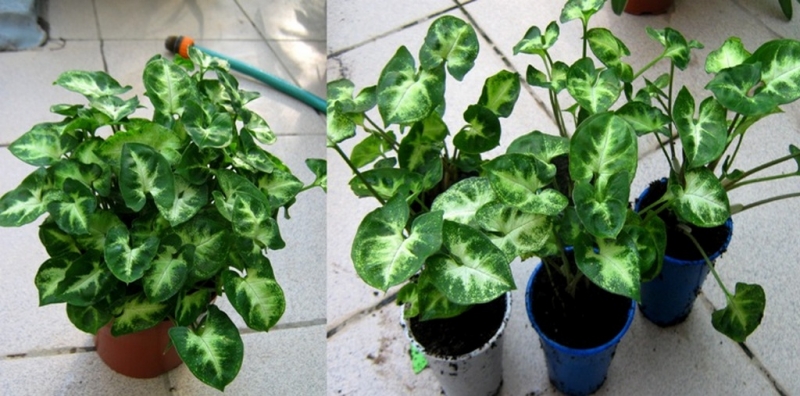
Small leaf plates are located on elongated petioles. The shape of the leaves is represented by elongated heart-shaped ellipses. The surface of the leaves is glossy. The color combines juicy shades of green: from dark to light tones. The prevailing shade is the color of milk green. The central vein is very pronounced.
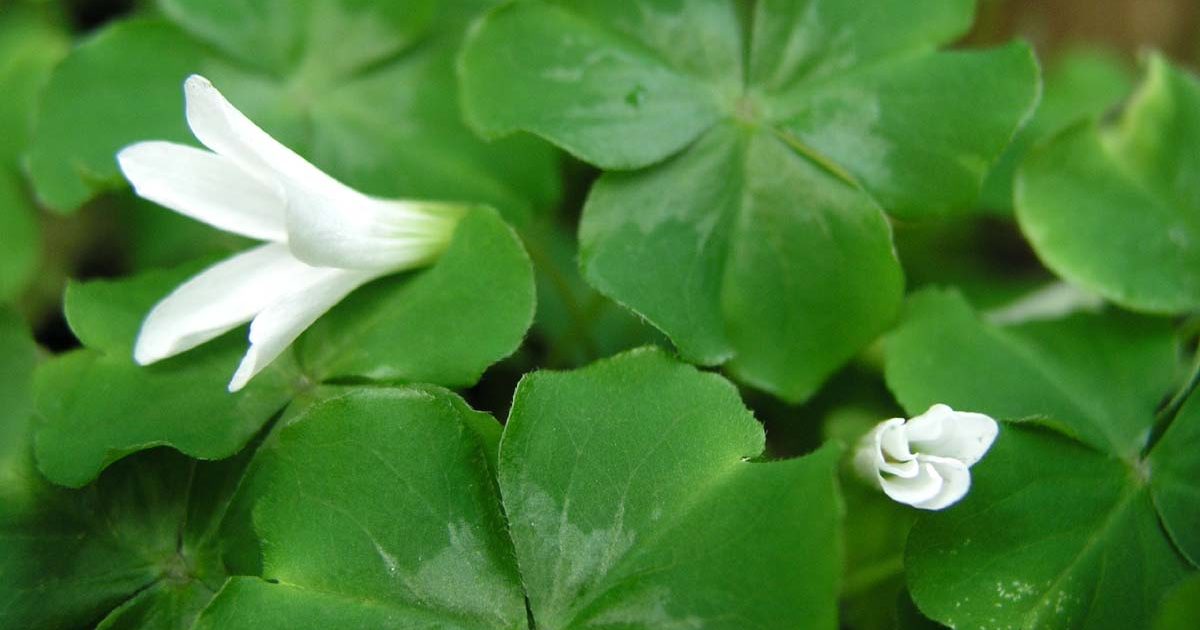 You may be interested in:
You may be interested in:Panda
Panda variety is not large. It is grown as a bush plant.
Representatives of the variety got their name for an interesting color: yellow spots are scattered on a dark green background. On one bush, spots may differ: some leaves will be covered with small specks, on others a large yellow blot will spread.
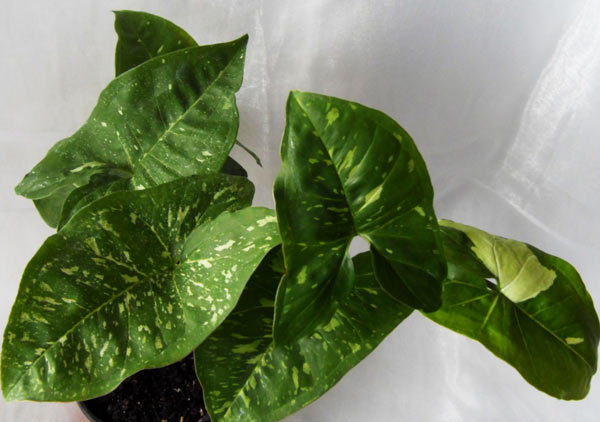
The shape of the plates is heart-shaped. The edge is not sharp. The surface of the plates is smooth, matte.
Rules for caring for syngonium at home
Syngonium is considered an unpretentious plant. If you follow the recommendations of flower care specialists, it will delight the eye with its exotic beauty for many years.
Seat selection
The choice of place for a flower is determined based on its shape. Syngonium can be grown as an ampel plant, bush or tree.
Ampel flowers are placed on high shelves or in hanging flower pots. The place should be spacious and not too dark. It is advisable to place a flower pot near the window.
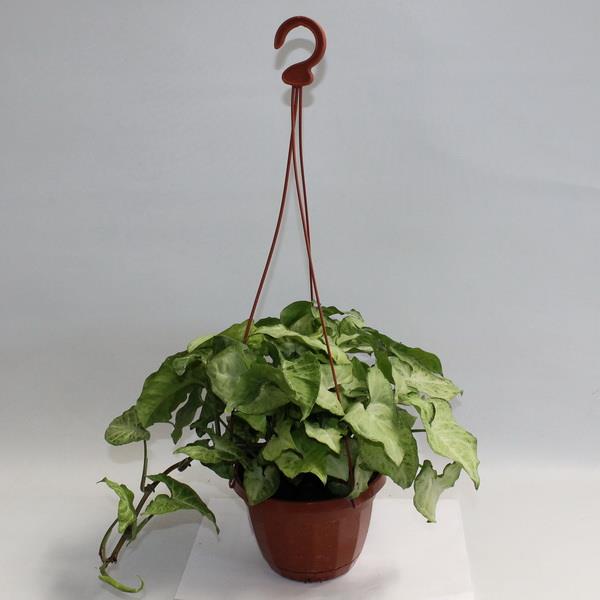
Bushes are placed on the windowsills of the western and eastern directions. You can put flowerpots on tables or cabinets near the window.
Tree-shaped syngoniums are placed on the floor in a well-lit area. You can also install a tub with a flower on low furniture, for example, on the console.
Soil, watering and fertilizer
Syngonium loves loose soil, which passes air and moisture well. The ideal soil for creeper contains the following components:
- peat - ¼ part;
- sheet land - ¼ part;
- sand - ¼ part;
- turf land - ¼ part.
The plant is also suitable for universal nutrient soil mixture, soil for monster.
Creepers are hygrophilous. They require regular and plentiful watering. The soil is moistened as its top layer dries. Some time after watering, it is imperative to drain excess water from the pot pan. In winter, the plant is watered a little less.
It is recommended to use rainwater for irrigation. It must first be defended during the day. Domestic water is used only after filtration and daily sedimentation.
Syngonium should be sprayed at least every 3 days. In the hot summer, it is advisable to put the vine under a warm shower. For spraying use only soft water. The presence of salts can adversely affect the appearance of the flower. In winter, spraying is reduced to 1 time per week.
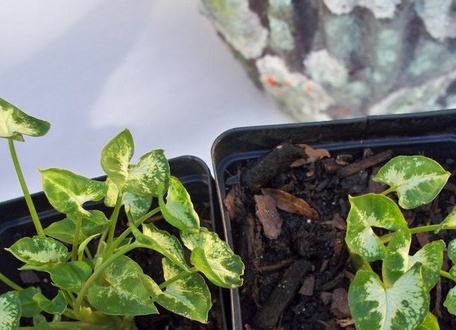
In spring and summer, the liana needs fertilizer. The feeding procedure is carried out every 2 weeks. At the end of summer, the frequency of fertilizer application is halved.From mid-autumn, feeding is canceled.
Syngonium really likes liquid fertilizers. Experienced growers are advised to alternate organics with minerals. As mineral fertilizers, complexes for decorative and deciduous plants with a minimum calcium content are used.
Temperature and light
For the content of lianas, the following temperature range is considered optimal:
- warm season - from 20 ℃ to 25 ℃;
- cold season - from 18 ℃ to 20 ℃.
Syngonium feels equally good in partial shade and in bright light. If the flower is located in a well-lit place, you need to make sure that direct sunlight does not fall on it. Under the influence of the sun, the leaves of the plant fade, become translucent. Syngonium also cannot be kept in the shade. Due to the lack of light, its leaves become smaller and dim. Therefore, in winter it is recommended to provide additional lighting with phytolamps.
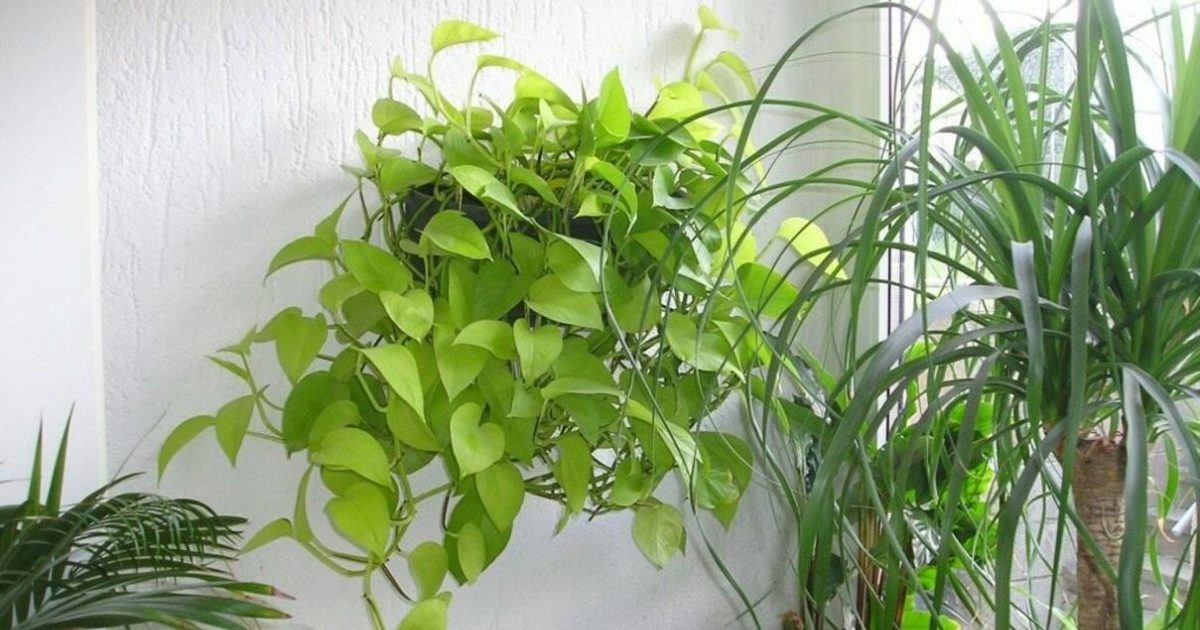 You may be interested in:
You may be interested in:Syngonium crown formation
The possibility of independent formation of the crown is one of the advantages of growing syngonium. If the florist has experience handling this plant, the liana becomes a malleable “line” in the hands of a master who knows his job. There are a number of cropping recommendations that allow you to get a variety of shapes. Liana can be turned into a beautiful curly flower, ball, dense bush and even a tree.
If the syngonium is planned to be grown as a climbing plant, only 1 liana is placed in the pot. Every spring, extra shoots are cut off from it, which spoil the appearance. If additional volume is required, pinch certain shoots from the 6th leaf. At the place of the pinch, new shoots will appear.
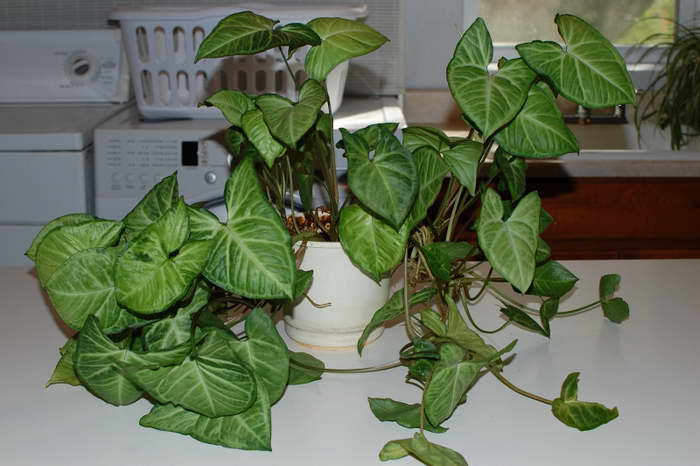
Liana can be grown in the form of a green ball suspended from the ceiling. To do this, when transplanting, one or several supports are instilled into the pots. Use plastic or bamboo tubes. The support should peep out from the pot by 10-15 cm. For a greater effect, you can place several plants at once in one pot. Lianas are allowed to curl around the supports. Excess shoots are removed in the spring.
Syngonium can be grown in a compact bush. For this, several plants are placed in one pot at once. All the tops of the shoots are cut, starting from the 7th leaf. This pruning helps to achieve maximum bushiness.
To grow a syngonium in the form of a tree, perform the following actions:
- Coconut fiber is filled with sphagnum moss and rolled up.
- The resulting support is fixed in the tub when transplanting the plant.
- Liana is wound around a support, directing its aerial roots to coconut fiber.
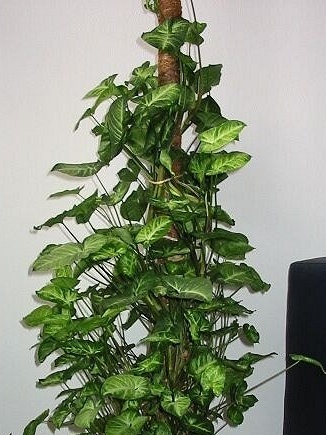
The plant clings to the supporting roots for the support, wrapping around it. Poor shoots are pruned every spring. Sphagnum moss is systematically moisturized. Thus, additional nourishment of the subordinate roots is provided.
How to propagate and transplant a flower at home
At home, the flower is propagated by cuttings and shoots. Both methods are quite effective.
Sprout propagation
Propagation by shoots provides the following actions:
- From an adult plant, an shoot with sleeping buds is cut off.
- The container is filled with an equivalent mixture of sand and peat. The resulting soil is well moistened.
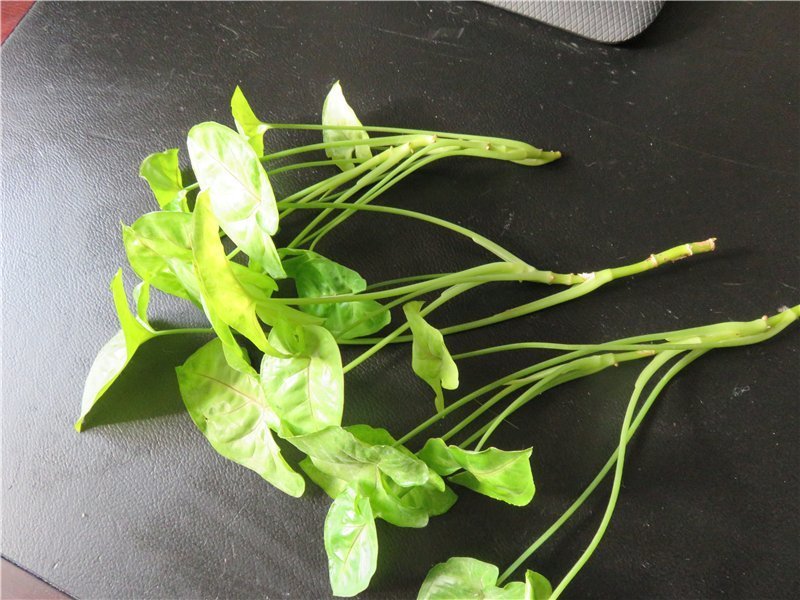
Shoots - The cut shoot is laid on the soil and slightly pressed inward. For fixing brackets are used. Some gardeners advise making a longitudinal incision on the side of the shoot in contact with the soil.To accelerate the rooting process, you can treat the shoot with a root growth stimulator.
- The container is covered with a film. You can make several holes in it or leave it whole and ventilate the liana every day.
- When the shoot takes root, it is transplanted as an adult plant. If there are several points of growth on it, division of the shoot is permissible.
Cuttings
You can get a new vine from the cuttings as follows:
- The apical shoot is cut off from the syngonium.
- The cutlery is placed in water with a tablet of activated carbon previously dissolved in it. Every 3-4 days, water is replaced. For rooting as soon as possible, put a plastic bag with holes on the water tank.
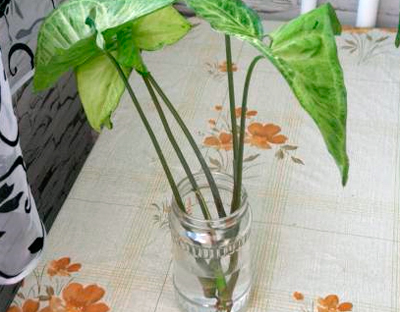
Cuttings - When the plant takes root, it is transplanted as an adult vine.
The cuttings root at a temperature of 22 ℃ to 27 ℃. Material can only be taken from an adult plant. Cuttings can also be rooted in a moist sand-peat mixture.
Transfer
The procedure for transplantation and crown formation are closely related.
The transplant procedure consists of the following steps:
- Pot selection. If the roots of the vines make their way through the drainage holes, this indicates that it is crowded. The pot is picked up more, but not huge. In a too spacious pot, the plant will throw all its strength into the development of the root system to the detriment of the growth of greenery.
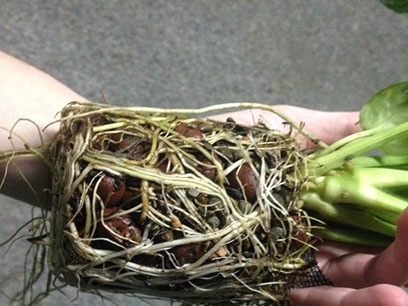
Root system - At the bottom of the pot spread a good drainage layer. If support is required for growing, it is fixed in the drainage. How to correctly install the support during transplantation can be seen in the photo.
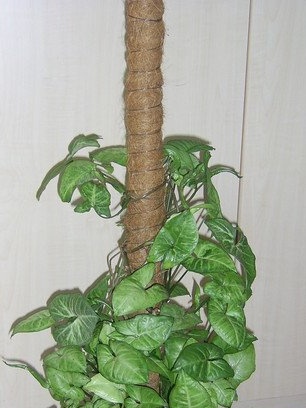
Support for syngonium - A little soil is poured onto the drainage layer. Then the syngonium is transferred to it and the roots are carefully straightened.
- Holding the plant, the voids of the pot are filled with the remaining soil.
- The soil is slightly crushed and moistened.
The transplant procedure is carried out in spring or early summer. Young vines are transplanted annually, adults - every 2-3 years. After transplanting, the flower cannot be fertilized for 2 weeks. If the plant has extra shoots that protrude from the general form, they are trimmed so that the liana has an aesthetic appearance.
Common Indoor Growing Questions
Syngoniums are unpretentious ornamental plants. The exception is only a few varieties, including the very popular Imperial White.

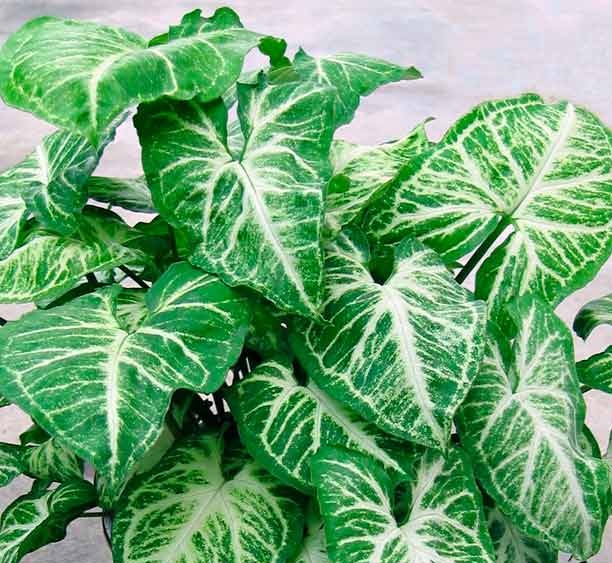
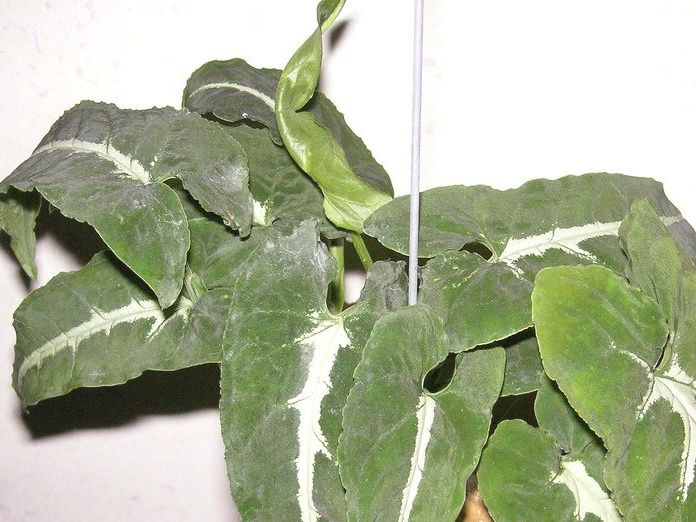
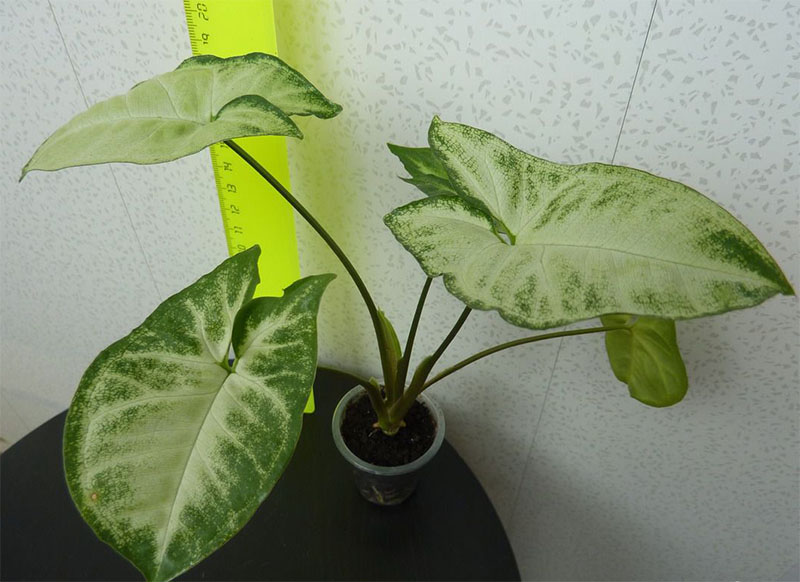



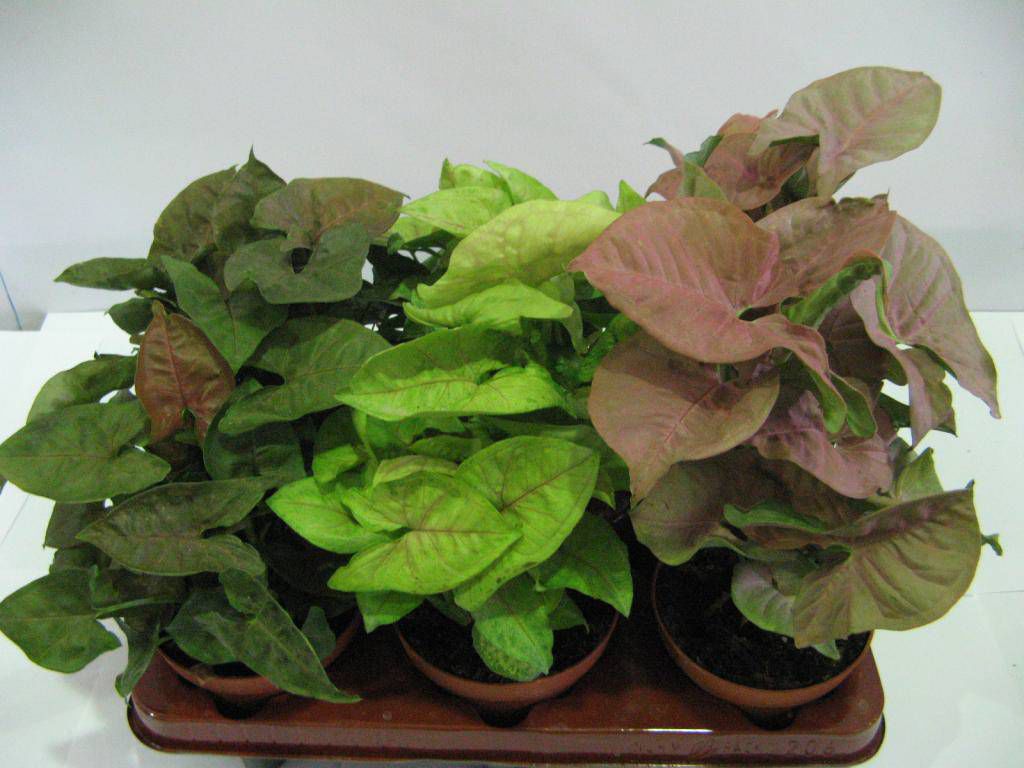
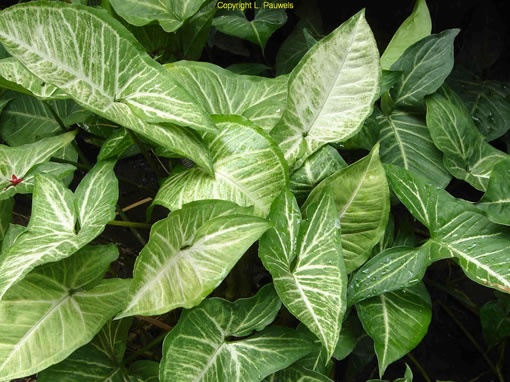
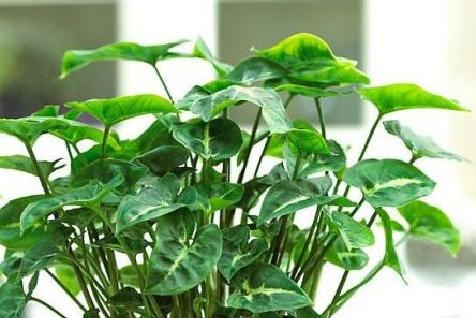
 Sow in the ground, without seedlings: 10 beautiful and unpretentious flowers
Sow in the ground, without seedlings: 10 beautiful and unpretentious flowers Platicodon planting and outdoor care
Platicodon planting and outdoor care Hosta - planting and care in the open ground in the Urals
Hosta - planting and care in the open ground in the Urals Oleander - care and growing at home
Oleander - care and growing at home